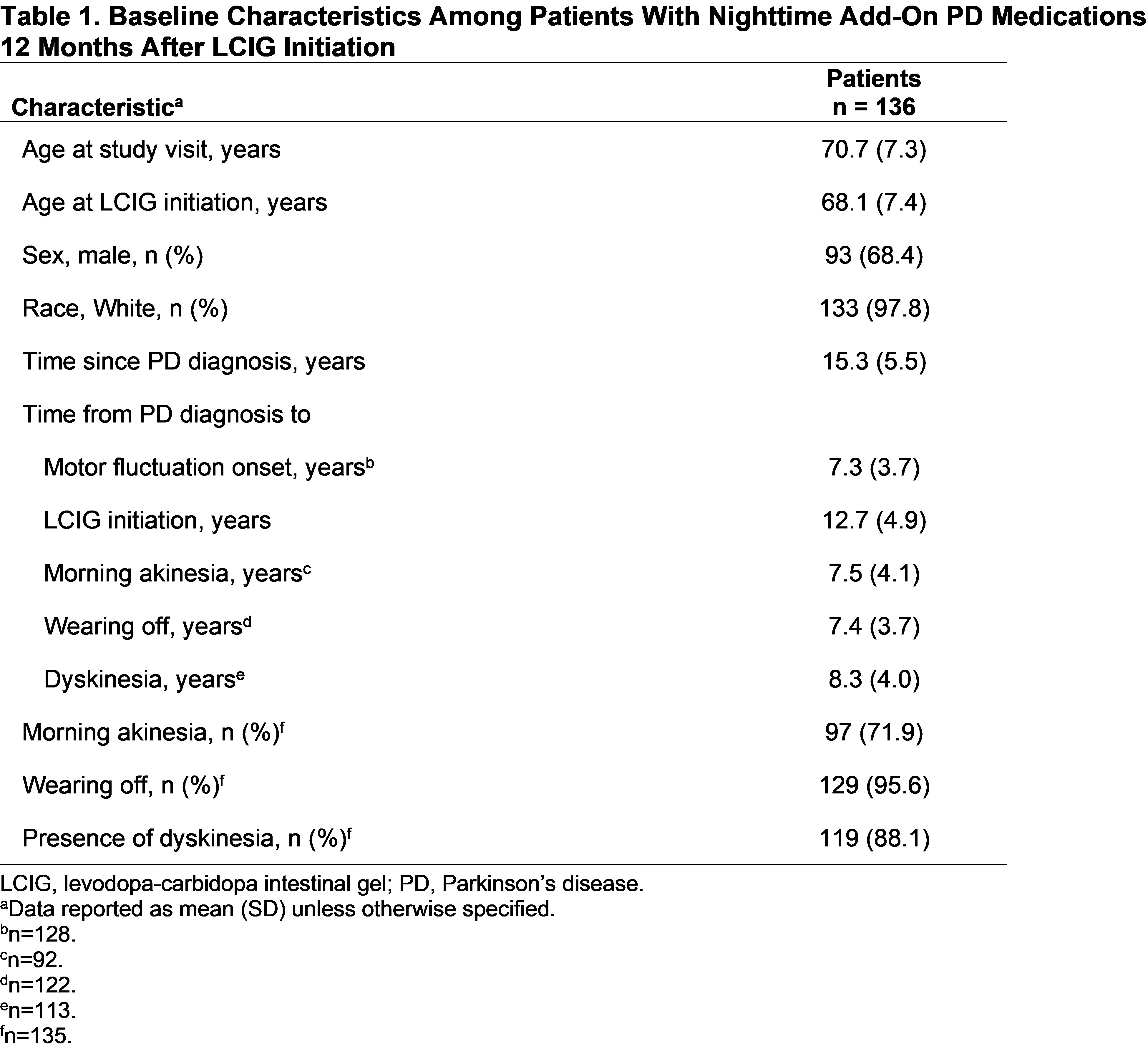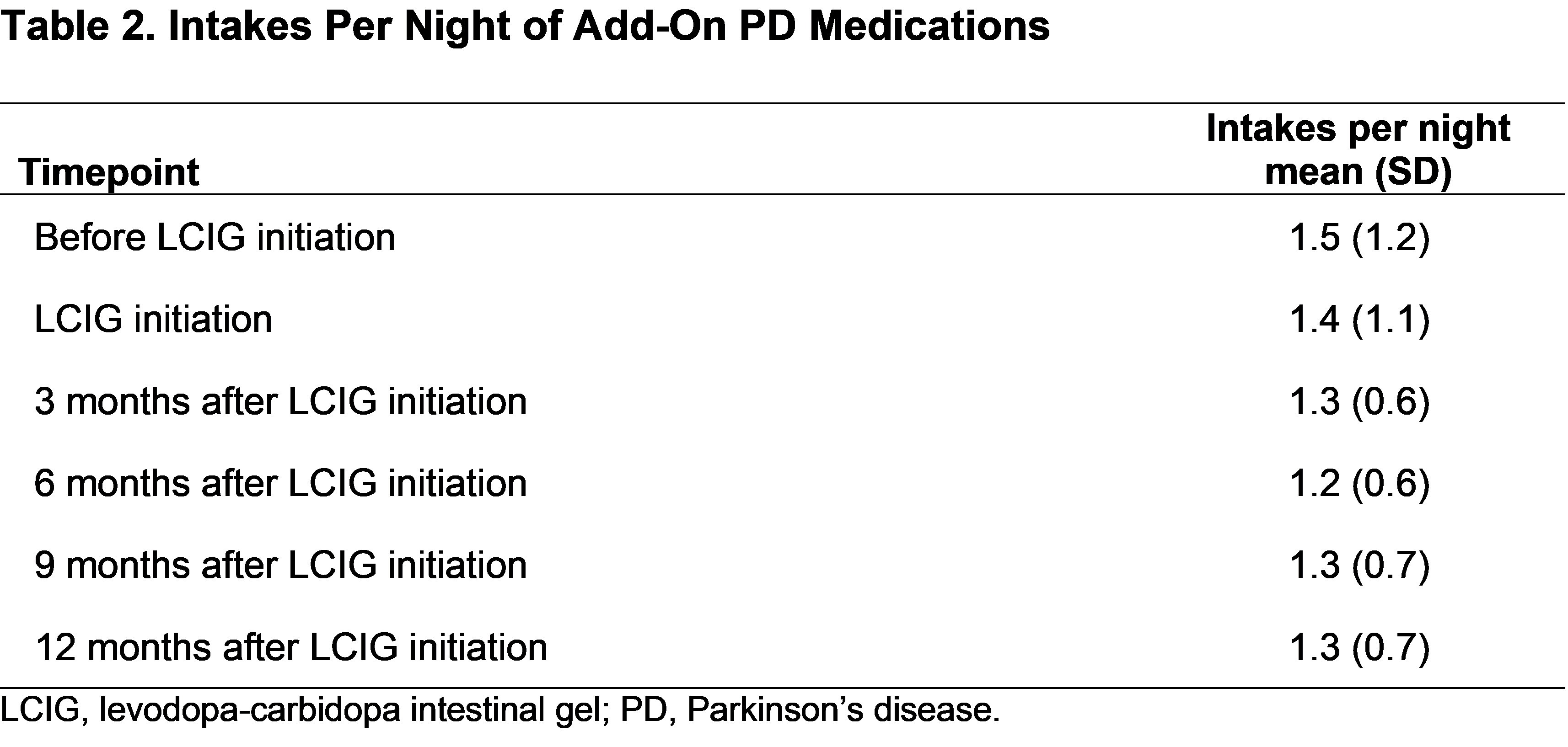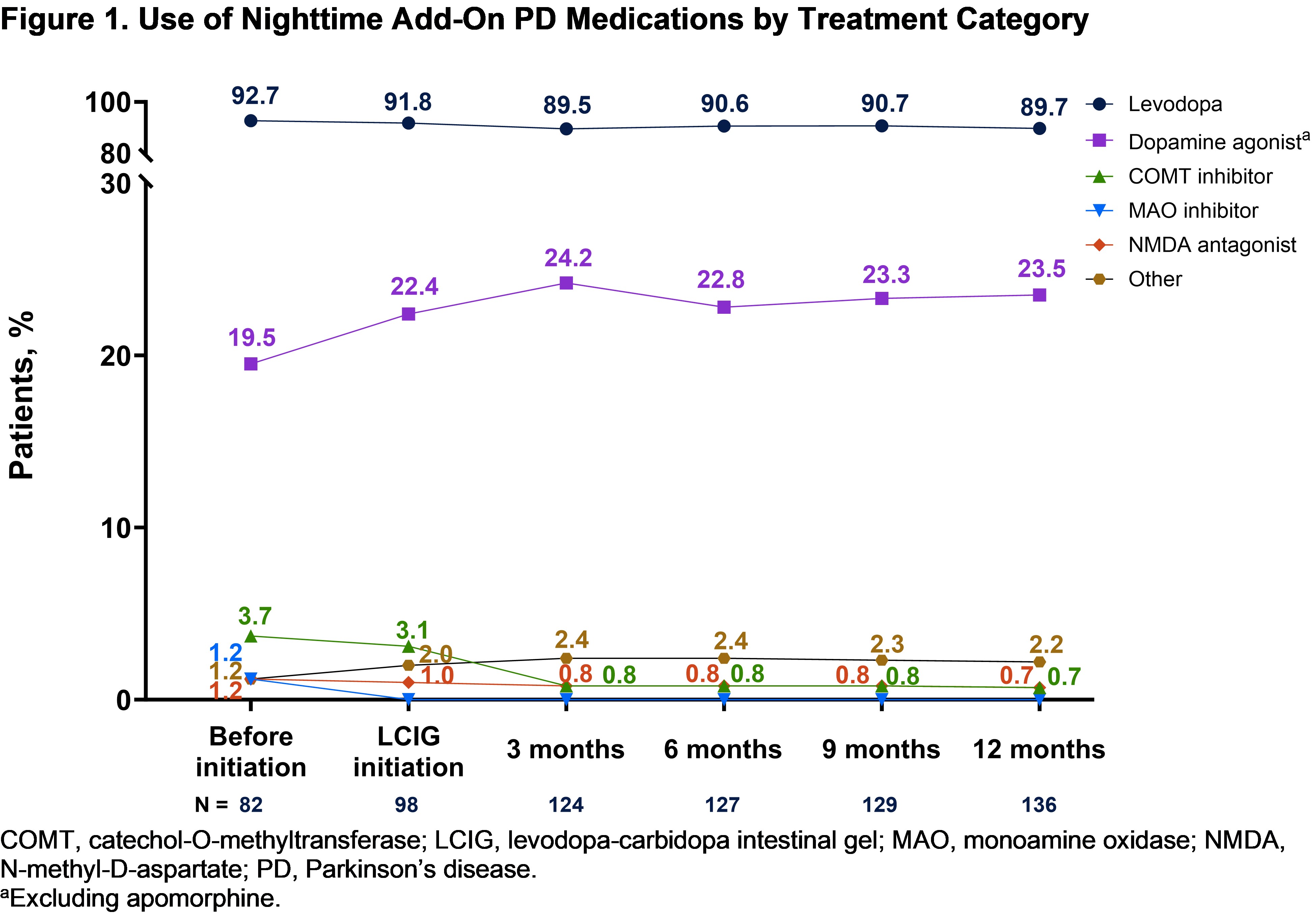Category: Parkinson’s Disease: Clinical Trials
Objective: To assess nighttime use of add-on medications for Parkinson’s disease (PD) in a post hoc analysis of the COSMOS (COmedication Study assessing Mono- and cOmbination therapy with levodopa-carbidopa inteStinal gel) study.
Background: Nearly 70% and 60% of patients with PD experience nocturnal disturbances and early-morning “Off” time, respectively, which suggest suboptimal PD management at night [1, 2]. Nighttime add-on PD therapies may not adequately control symptoms in some patients. Levodopa‑carbidopa intestinal gel (LCIG) is a gel suspension of levodopa‑carbidopa for continuous daytime infusion over 16 hours. In the COSMOS study, presence of nocturnal and/or morning akinesia was the most common reason for use of 24-hour/day LCIG infusion, which led to improvement in these symptoms following initiation [3].
Method: COSMOS (NCT03362879) was a real-world, retrospective, observational study that evaluated LCIG in a routine clinical setting. Patients must have received ongoing LCIG treatment for ≥12 months and for ≥80% of days in the preceding year. Patients were evaluated at a single study visit conducted ≥12 months after LCIG initiation. This analysis assessed nighttime PD medication use and change in nocturnal and/or morning akinesia prevalence from baseline to 12 months after LCIG initiation in patients using add-on PD treatments exclusively at night. Physicians collected data through a retrospective review of medical records and cross‑sectionally during the study visit.
Results: Among 409 enrolled patients, 136 (33.3%) received add‑on PD medications at nighttime 12 months after LCIG initiation. Baseline characteristics were consistent with the overall population [table1] [4]. Intake of add-on PD medications was 1–2 times/night [table2]. The mean (SD) levodopa equivalent daily dose of nighttime add‑on PD medications was 156.9 [183.4] mg before LCIG initiation and 214.0 [146.5] mg 12 months after LCIG initiation. Levodopa was the most common nighttime add-on medication [figure1], with a mean (SD) dose of 182.2 (125.6) mg before LCIG initiation and 177.9 (111.2) mg 12 months after LCIG initiation. Prevalence of nocturnal and/or morning akinesia decreased from 74.3% before LCIG initiation to 61.0% at the study visit.
Conclusion: Despite the use of nighttime add-on PD medications, most patients experienced nocturnal and/or morning akinesia. Add-on treatments may not fully address the nocturnal treatment gap.
Table 1
Table 2
Figure 1
References: 1. Barone P, et al. Neurology. 2004;63:S35–S38.
2. Rizos A, et al. Parkinsonism Relat Disord. 2014;20:1231–1235.
3. Kovács N, et al. Parkinsonism Relat Disord. 2022;105:139–144.
4. Fasano A, et al. Mov Disord. 2021;36:1853–1862.
To cite this abstract in AMA style:
T. Gurevich, S. O'Sullivan, J. Parra, M. O'Meara, J. Zamudio, A. Fasano. Nocturnal Use of Add-On Medications for Parkinson’s Disease: Post Hoc Analysis of the COSMOS Study [abstract]. Mov Disord. 2024; 39 (suppl 1). https://www.mdsabstracts.org/abstract/nocturnal-use-of-add-on-medications-for-parkinsons-disease-post-hoc-analysis-of-the-cosmos-study/. Accessed October 21, 2025.« Back to 2024 International Congress
MDS Abstracts - https://www.mdsabstracts.org/abstract/nocturnal-use-of-add-on-medications-for-parkinsons-disease-post-hoc-analysis-of-the-cosmos-study/



